Captain Eddie
Brief Synopsis
Cast & Crew
Lloyd Bacon
Fred Macmurray
Lynn Bari
Charles Bickford
Thomas Mitchell
Lloyd Nolan
Film Details
Technical Specs

Synopsis
On 21 Oct 1942, an American Army transport plane runs out of gas over the South Pacific and crash lands in the ocean. On board with the seven crew members is Capt. Edward Rickenbacker, a famed inventor, race car driver and America's "number one" World War I flying ace. After the men scramble into three rubber rafts, they realize that their water, rations and medical supplies are aboard the sinking plane. Although only Sgt. Alex is seriously injured, Col. Hans Adamson suffers a wrenched back and Sgt. Jim Reynolds' nose is lacerated. As the men, including Capt. Bill Cherry, Lt. Jim Whittaker, Pvt. John Bartek and Lt. Johnny DeAngelis, argue about the chances of rescue, Eddie assures them of the capabilities of modern technology. He then reminisces about the beginning of his lifelong involvement with machines: In Columbus, Ohio, Eddie is one of seven children born to an immigrant couple. Eddie's father William is a bridge builder and encourages Eddie's affinity for mechanical contraptions, although his mother Elise is not pleased by Eddie's attempts to fly with the aid of a large umbrella. Eddie's childhood ends abruptly when William is killed in an industrial accident, and a heartbroken Elise warns her son to avoid machinery. The teenaged Eddie takes odd jobs to support his family, but when he meets car salesman Tom Clark, he confesses his love for automobiles and persuades owner Ike Howard to employ him at the factory. With his first pay packet in hand, Eddie buys a ride on a rickety airplane and receives a concussion when the plane crashes. Elise makes Eddie swear never to go up in a plane again, which he reluctantly does. Eddie's reverie comes to an end as he and his raft companions are faced with starvation. Gentle Bartek finds comfort in the Bible, for which he is ridiculed by Whittaker. Two weeks pass as the men, wracked by thirst and hunger, pray for rain, fish and rescue. Eddie's mind again wanders back to Ohio, to the time when he met his future wife: Now an adult and a successful car salesman, Eddie accidentally runs over the bicycle of Adelaide Frost. Eddie gives her a ride to her class at a dancing academy, where he takes lessons to impress the pretty young woman. Despite competition from Lester Thomas, the most persistent of Adelaide's beaux, Eddie wins Adelaide's heart, and as time passes, becomes a famous race car driver. Eddie and Adelaide become engaged, but before they can marry, Eddie is called to serve in France as General Pershing's driver during World War I. Knowing that Eddie still loves airplanes, Elise releases him from his promise never to fly again, and soon Eddie becomes America's greatest ace. After the war ends, Eddie marries Adelaide, although their honeymoon is cut short when Eddie receives word that his plans for a commercial airline have been approved. Eddie is brought back to the present when a violent storm pummels the tiny rafts. The men gather rainwater, but the ordeal proves too much for Alex and he dies. Later, Whittaker again disparages Bartek's faith, and Eddie recalls how Adelaide and their two sons never lost hope that he would survive after being injured in a commercial airline crash. By 11 November 1942, Eddie can no longer endure Whittaker's cynicism and the men vow to fight "when" they return home. The situation improves after a seagull lands on Eddie's head and he captures it for food. Meanwhile, Adelaide refuses to believe that Eddie is dead, although the War Department notifies her that it is about to abandon the search. A day later, Bartek confesses his fear that they will not be rescued, but as Eddie begins to despair, he hears planes overhead. One of the pilots drops a flare to let the rafts's occupants know that they have been seen, and a grateful Eddie remembers his father's words praising technology.

Director

Lloyd Bacon
Cast

Fred Macmurray
Lynn Bari

Charles Bickford

Thomas Mitchell
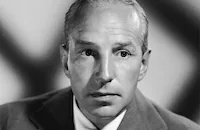
Lloyd Nolan
Mary Philips

Darryl Hickman

Spring Byington

Richard Conte
Charles Russell
Richard Crane

Stanley Ridges

Clem Bevans
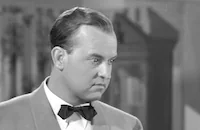
Grady Sutton
Chick Chandler
Dwayne Hickman
Nancy June Robinson
Winifred Glyn
Gregory Muradian
David Spencer
Elvin Field
George Kitchell
Boyd Davis
Don Garner
Mary Gordon
Joseph J. Greene
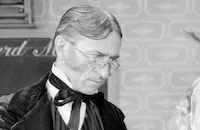
Olin Howlin
Robert Malcolm
Harry Shannon
Virginia Brissac
Peter Michael
Peter Garey
Fred Essler
Lotte Stein
Earle Dewey
William Newell
Franklin Parker
William Forrest
Tom Dillon
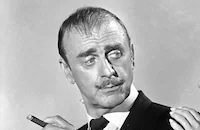
John Dehner
Georges Renavent
Paul Marion
Howard Negley
George Chandler
Joe Devlin
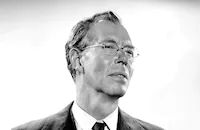
Walter Baldwin
Robert Homans
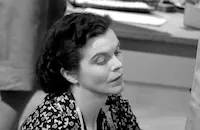
Dorothy Adams
Edith Evanson
Vincent Graeff
Leon Tyler
Marvin Davis
Lavonne Ranum
Eddy Chandler
Tommy Mack
Orville Race
Ed Allen
Charles Wagenheim
Pat Gleason
Garry Owen
Donald Kerry
Jack Gargan
Jack Davidson
Ray Johnson
Anne Loos
Crew
John Tucker Battle
Ben Black
Jerome Cady
James B. Clark
Curtis Fetters
Eugene Grossman
Sol Halprin
Ralph O. Hammeras
Roger Heman
Renè Hubert
Katherine Lambert
Edwin H. Lemare
Harry M. Leonard
Thomas Little
Joe Macdonald
Paul Mantz
Cyril J. Mockridge
Neil Moret
Emil Newman
Ben Nye
Maurice De Packh
Charles A. Rankin
Maurice Ransford
Frances C. Richardson
Irving Rosenberg
Walter M. Scott
Fred Sersen
Roger Shearman
Winfield R. Sheehan
Murray Spivack
Christy Walsh
Lyle Wheeler
Lt. James T. Whittaker
Saul Wurtzel

Film Details
Technical Specs

Award Nominations
Best Special Effects
Quotes
Trivia
Notes
The working titles of this film were Pacific Mission; Rickenbacker, the Story of an American; Rickenbacker; Hat in the Ring and First, Last and Always. The film is based on the life of Edward Rickenbacker (1890-1973), a pioneer in both the automobile and aviation industries. As depicted in the film, Rickenbacker was born to Swiss immigrants in Columbus, OH, and became a noted race car driver after working with automobile manufacturer Ike Howard. During World War I, Rickenbacker shot down a record number of enemy aircraft and received the Congressional Medal of Honor. After the war, Rickenbacker married Adelaide Durant, and the couple had two sons. In the 1930s, he joined Eastern Airlines, of which he became president, and his 1941 crash, which left him in a coma for several days, is briefly touched on in the picture.
In 1942, Rickenbacker undertook a mission touring American airfields, at the behest of General "Hap" Arnold and Secretary of War Henry Stimson. Rickenbacker toured various military air bases in Europe, then, accompanied by Col. Hans C. Anderson, set out for the South Pacific. On an Army transport plane manned by Capt. William T. Cherry, Lt. James C. Whittaker, Lt. John J. DeAngelis, Pvt. John F. Bartek, Sgt. James W. Reynolds and Staff Sgt. Alexander Kaczmarczyk, Rickenbacker took off on October 21, 1942. After losing their bearings and running out of gas, the plane's occupants were forced to crash land in the Pacific Ocean. During their twenty-one day ordeal aboard three rubber rafts, Kaczmarczyk died from salt-water poisoning and the seven remaining survivors subsisted on four oranges, fish, rainwater and a seagull. After letting the rafts drift apart, they were rescued on November 12, 1942, and within a few weeks, Rickenbacker continued his mission, which included touring Guadalcanal and other bases in the South Pacific. In 1943, Rickenbacker published a book about the experience, as did Whittaker.
Interest in Rickenbacker's story by film studios was immediate, according to contemporary sources. A February 7, 1943 New York Times item noted that independent producer David O. Selznick was one of those interested in filming Rickenbacker's tale. An unidentified, October 27, 1943 newspaper article, contained in the film's file at the AMPAS Library, asserted that "at least two major producers bid as high as $500,000" but were rejected by Rickenbacker, who "felt he must remain in a position to 'approve cast, director, players and script, as well as the final picture.'" The article speculated that fellow aviator Charles A. Lindbergh was one of producer Winfield Sheehan's financial backers in the project. Christy Walsh, who represented Rickenbacker during his negotiations with producers and was credited onscreen as associate producer, was a long-time friend of the aviator, according to contemporary sources.
A May 1943 New York Times article reported that Sheehan and Walsh employed writers Edwin Burke and Paul Green to work on the screenplay "based on the material gathered by six previously engaged biographers-Alva Johnston, John Larkin, Isabel Leighton, Bill Henry, Lee Loeb and John Kobler." The latter six writers "interviewed hundreds of persons in various parts of the country who had first-hand knowledge" of Rickenbacker's career, according to New York Times. The extent of the contributions of Burke, Green and the six previously engaged writers to the completed screenplay has not been determined, however. The Twentieth Century-Fox Produced Scripts Collection, located at the UCLA Arts-Special Collections Library, lists Howard Emmett Rogers as another writer, but his contribution to the finished film has also not been determined.
The studio records contain notes from a November 14, 1944 conference with Rickenbacker, Sheehan, Adamson and contributing writer Jerome Cady, which indicate that Rickenbacker and Adamson were closely involved in the preparation of the film's screenplay, and that Rickenbacker's wife and mother were also consulted. In addition to technical clarifications of the Pacific ordeal, Rickenbacker noted that his preference for the title was Journey On instead of Hat in the Ring or First, Last and Always; that the song "Moonlight and Roses," which was one of his and Adelaide's favorites, should be used; and that his "overall interest in the picture" was the "warm and wholesome portrayal of the life of one American."
According to an February 8, 1943 Hollywood Reporter news item, Twentieth Century-Fox wanted Rickenbacker's surviving comrades to appear in the picture, with the hope that some of them would portray themselves. The news item stated that Whittaker, who had been in California to lecture defense plant workers, was specifically asked to appear in the film, and that the Army Ferry Command, the military branch to which the men belonged, would have to grant permission. According to Hollywood Reporter news items and studio publicity, all the survivors were interviewed by the studio, even though none of them appeared in the completed picture. A March 29, 1944 Hollywood Reporter news item stated that Whittaker had been given a leave of absence by the War Department in order to act as a technical advisor on the picture. A August 16, 1943 Hollywood Reporter news item noted that Sheehan was going to keep the ending of the film "open" for the time being, in case the War Department would approve a representation of Rickenbacker's meetings with Joseph Stalin and tours of the Russian front, in connection with his continued missions for Secretary Stimson.
Rickenbacker's outspoken and frequently unpopular views on organized labor presented some worries to the producers, and the May 1943 New York Times article commented that Sheehan and Walsh decided to proceed with the project "despite all the agitation against making the biography, even from some labor groups within the studios and from exhibitors." The October 1943 unidentified article, mentioned above, noted that several Twentieth Century-Fox executives received a "storm of protest" over the studio's decision to produce the picture. According to a July 1943 Hollywood Reporter news item, Gary Cooper was under consideration for the leading role, and on October 11, 1943, Hollywood Reporter announced that negotiations between Cooper and Sheehan were still under way, and that Cooper's representative had informed the producer "that the actor, contrary to reports, had not received a single request from labor groups not to play the role." Later in Oct, however, Hollywood Reporter noted that at least six Hollywood labor organizations petitioned Cooper not to appear in the film.
In January 1944, Sheehan reaffirmed his decision to produce the film, according to a Hollywood Reporter news item, and negated "contradicting rumors that [the film] was due for the shelf after an expenditure of close to a quarter of a million due to the heavy attacks from organized labor groups and the reported inability to get a star name to play the role." Fred MacMurray was signed to play Rickenbacker in March 1944. Although Hollywood Reporter production charts include Donald Meek in the cast, he does not appear in the completed picture. According to Hollywood Reporter news items, some sequences were shot on location at Santa Rosa, CA.
Producer Sheehan died before the release of the film. The picture received generally favorable reviews and an Academy Award nomination for Best Special Effects. In a January 1946 article on biographical films, New York Times reported that Captain Eddie has "provoked some loud alarm" upon its release due to its "hero-worship" portrayal of Rickenbacker.












